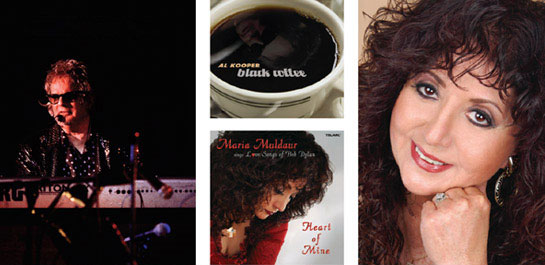
AL KOOPER
Brooklynite Al Kooper (Alan Peter Kuperschmidt) grew up with his father’s Bessie Smith records, cultivating his love for blues, soul, gospel, and R&B. He taught himself piano and guitar, formed a neighborhood doo-wop group, and began songwriting, including hits for Gene Pitney and Gary Lewis and the Playboys.
Working as a session guitarist, he met producer Tom Wilson, who asked Kooper to sit in on Bob Dylan’s “Like A Rolling Stone” session. Kooper took advantage of the lack of an organist by bluffing Wilson into believing he had a great part in mind for the song. Wilson stepped out to take a call, and Kooper wound up on the other side of the control room glass, at the organ.
Without a doubt, this event changed Kooper’s life; he went on tour with Dylan, accompanying him during his electric set at the 1965 Newport Folk Festival, and subsequently played on Blonde on Blonde. Kooper’s first Dylan session also fostered a long-lasting friendship with blues guitarist Mike Bloomfield, pairing up for acclaimed albums Live Adventures of Mike Bloomfield and Al Kooper and Super Sessions (also including Steven Stills).
In 1965 Wilson invited Kooper to audition for the Blues Project. After a successful one-year run with them, he was ready to develop a group with a new R&B/jazz sound: Blood, Sweat, and Tears. Kooper stayed with them long enough to enjoy the raves over their debut, The Child is Father to the Man, mostly comprised of his own tunes. However, low sales pushed Columbia Records’ demand for a more commercial sound, so Kooper left.
He now had time to record with Jimi Hendrix, the Who, and the Rolling Stones. Columbia brought Kooper on board as a producer and he went on to sign the Zombies, engineered a Simon and Garfunkel concert, and released his first two solo records (I Stand Alone and Kooper Session, with Shuggie Otis).
In the early ’70s, he wisely signed Lynyrd Skynyrd to his own Sounds of the South label, produced their first three albums, then sold the label to MCA in 1974. He went on to produce other artists like B.B. King, and wrote his well-known autobiography Backstage Passes. A brief relocation to England found him playing with the three remaining Beatles on George Harrison’s “All Those Years Ago.” Back in the U.S., he joined Dylan for his 1981 world tour, was appointed West Coast A&R Director for PolyGram records, and began to compose for TV and film.
Kooper went on tour with Joe Walsh in the ’90s, and, after 20 years, put out another album, ReKooperation, with latenight TV’s Jimmy Vivino and Anton Fig (“Conan” and “Letterman,” respectively). Later, (Dr.) Kooper became a professor at Berklee College of Music in Boston, and formed the Funky Faculty.
In 2005 Kooper released another solo album, Black Coffee (Favored Nations), followed by the DVD release of a 2000 PBS broadcast of the ReKooperators in concert. He is currently touring the country and planning events to celebrate his 50 years as a professional musician in 2008, which will include a record and online release of 50 tracks previously unavailable digitally in the U.S.
MARIA MULDAUR
Maria Muldaur, born Maria D’Amato in 1943 in New York City’s Greenwich Village, is an acclaimed roots vocalist best known for her Grammy-nominated, Top Ten hit “Midnight at the Oasis.” As a child, Muldaur was most familiar with country and R&B/early rock ‘n’ roll. The advent of girl groups inspired her to form her own group in high school, but when the girls were offered a recording contract, her mother refused to let Maria sign.
In her own neighborhood, her involvement with the Village’s folk revival movement of the early ’60s (particularly with the Friends of Old Timey Music which brought rural Southern musicians north to play for urban audiences), led to long visits at Doc Watson’s home in North Carolina, where she learned to play fiddle from Gaither Carlton.
In New York she joined John Sebastian, David Grisman and others in the Even Dozen Jug Band. Soon after, she joined the Jim Kweskin Jug Band in Cambridge, and married her bandmate, Geoff Muldaur. The band broke up in 1968 after a few albums, but the Muldaurs continued to make music together, releasing Pottery Pie and Sweet Potatoes.
Relocated to Woodstock, NY, more allnight jams with notable artists–Bob Dylan, the Band, Paul Butterfield, Janis Joplin’s Full Tilt Boogie Band—brought up other unforeseen opportunities: Geoff decided to join Butterfield to form Better Days. The Muldaurs divorced, and Maria released solo albums on Reprise Records, the first of which earned her a Grammy nomination for Best New Female Artist of 1974; not long after, the record went platinum.
Muldaur’s repertoire ranges from gospel to jazz to country to blues, or what she calls “Bluesiana,” a blend of blues, R&B, and Louisiana music, which she was turned on to by collaborator Dr. John. Recent career highlights include 1992’s Louisiana Love Call, then hailed by many as her best album yet, and her Telarc debut, 1996’s Fanning the Flames. Her 2001 Grammy-nominated Richland Woman Blues, inspired by a visit to Memphis Minnie’s grave, pays tribute to female blues singers. Add another nomination in 2005, for Sweet Lovin’ Ol’ Soul, to this excellent track record; there’s no denying she’s at the top of her game.
In 2006 Muldaur was featured on Martin Scorcese’s documentary film about Bob Dylan, No Direction Home. In August, she released Heart of Mine: Love Songs of Bob Dylan. (See review in September’s Elmore.) She explained, “I try to sing from the heart, and on the Dylan album, more than ever, I had to delve very deep into my heart. These are hard songs. Naked, vulnerable emotion. You can’t hide behind any blues licks.” Muldaur is touring the U.S. into 2007. E
![]()
Elmore: What are you listening to right now?
Maria Muldaur: Bob Dylan’s Modern Times, of course, what else? Van Morrison’s latest. A lot of Memphis Minnie and Ralph Stanley. A lot of old timey music.
Al Kooper: Lewis Taylor, Scrapomatic, and Robin Thicke. I listen to a lot of new music. Every Tuesday they put the new releases up on iTunes. There’s never been an arena like that before. I had given up on new music because I thought what’s on radio was all that was out, and it was crappy.
EM: What was the first record you ever bought?
MM: After Burl Ives’ Little White Duck and Other Children’s Favorites, kids’ records, then Elvis Presley’s first LP, and I played it endlessly. When I found it years and years later, there were pink lipstick marks all over. Then I started buying 45s.
AK: A 45 of “The Closer You Are,” by the Channels on the Whirling Disc label. I was probably 13.
EM: Where do you buy your music?
MM: Village Music in Mill Valley, California. I don’t get anything online, I’m tactile.
AK: Online. I’m not really a collector, I just have an amazing collection based on being a fan.
EM: What’s your favorite album of all time?
MM: I take this question very seriously. I’ll have to think about it. What’s your deadline?
AK: Pet Sounds by the Beach Boys.
EM: What was the first instrument you played?
MM: My mother had a lovely spinet, and she sent me to Greenwich House Music School to take piano lessons, but I never could learn to read music, so I would trick the teacher into playing the piece for me, and then I would memorize it and work on it all week, and then play it while pretending to glance up at the music, which just looked like little wiggly dots on a page. Did you ever learn how to read music? Naaah. What for? I can hear it, I don’t gotta read it!
AK: Piano.
EM: What brought you to the instrument you now play?
MM: I play a little guitar, banjo in modal tuning, and fiddle. But I play a bitchin’ tambourine. I played fiddle on the last cut because Bob Dylan pointed his finger at me and said, (imitating Dylan) “C’mooon Maria, yer late with it! You oughta get that thing out and start practicing with it. People need to hear that rustic way you play.”
AK: I saw Elvis on the Ed Sullivan show, and I said, “This is much hipper than me playing the piano.” I was about 12, and had been playing the piano about six years. Today, I probably play keyboards most.
EM: What musician influenced you most?
MM: Hank Williams, Sr., and Kitty Wells when I was five years old; all those early country artists. Maybe that’s why I wound up with a yodel in my voice. Early R&B artists that I used to hear on the end of the radio dial on the little black station that you could barely tune it.
AK: Ray Charles. EM: What did you pick up from Ray Charles? Everything.
EM: What was the song or event that made you realize you wanted to be in music?
MM: I had an epiphany. I was going to Hunter College and avoided taking calculus, physics, any of that left-brain shit; I was taking liberal arts courses. The Dean noticed my courses weren’t a full compliment of what was required, so they set up an appointment. Meanwhile, I was in the Even Dozen Jug Band, we had finished our record, and there was a lot going on. I woke up the morning on the interview and had cramps. I started nipping on my grandmother’s big cramp recipe, which was whiskey, so by the time the appointment came I was high as a kite. I left a note for my boyfriend and went to our record-release party. The note said something like “I’m quitting college and I’m going to pursue music.” There was no turning back.
AK: When I saw Elvis. As I studied Elvis, I did get more into Scotty Moore, and then James Burton and Cliff Gallup; that was my triumvirate in my early teens. My hardest homework at that time was learning the records that they played on, trying to figure out how to play what they were playing. That’s how I learned music. I’d only read music if there was nothing else to read. I play by ear, primarily. I learned “Blue Rondo à la Turk” by Dave Brubeck by getting the music, but only when it’s beyond my ear. Arranging is a very strange thing for me. I could just do it, I didn’t study it, I think it’s just a God gift, very natural and organic for me, and probably the thing I do best. But I love playing live, it’s probably my favorite thing in the world.
EM: Who would you like in your rock and roll heaven band?
MM: I’d need two bands: one jazz, one blues. For jazz, Benny Carter on sax, Ray Brown on bass, James P. Johnson or Duke Ellington on piano, Danny Caron, guitar, Louis Armstrong on trumpet and drums, Earl Palmer. For blues, I’d have James Booker on piano, Chris Burns on organ—pretty much have them on my last record. Jim Keltner or Ron Tutt on drums, I’d like to sing with Al Green. Junior Walker on horns, and Hutch Hutchinson or James Jamerson on bass, Cranston Clements on guitar, he’s my all-time favorite.
AK: The drummer would be Danny Richmond, Charlie Mingus’ drummer for most of his career. Bass player, probably Stanley Clarke, because he can play anything. Keyboard, Ray Charles. Guitar, my favorite guitar player is Jimmy Vivino—he can play anything. Horns…Maynard Ferguson’s horn section, ’60-64, that was a very big influence on me. On organ, Joey DeFrancesco. My favorite singer is probably the Rev. Claude Jeter; the lead singer of the Swan Silvertone gospel singers. Gospel music has been a giant influence on me.
EM: What’s your desert island CD?
MM: I’d have to have at least 12. Amazon.com has my list.
AK: Probably Pet Sounds. Given a second CD, then The Sun Sessions.


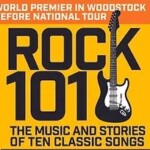
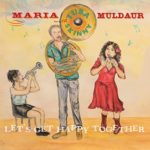
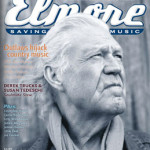
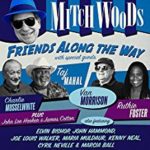

Be the first to comment!